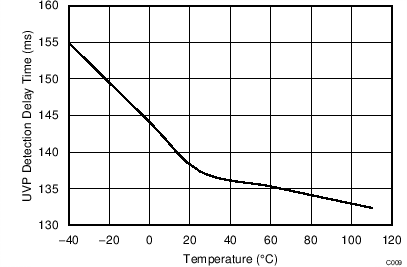SLUSBU9I March 2014 – August 2024 BQ2970 , BQ2971 , BQ2972 , BQ2973
PRODUCTION DATA
- 1
- 1 Features
- 2 Applications
- 3 Description
- 4 Device Comparison Table
- 5 Pin Configuration and Functions
- 6 Specifications
- 7 Parameter Measurement Information
- 8 Detailed Description
- 9 Application and Implementation
- 10Device and Documentation Support
- 11Revision History
- 12Mechanical, Packaging, and Orderable Information
6.8 Typical Characteristics

| VBAT = 1.5V | ||

| FOSC, Setting = 1.255kHz | ||


| tOVPD, Setting = 1.25s | ||

| tUVPD, Setting = 144ms | ||

| tOCCD, Setting = 8ms | ||

| tUVPD, Setting = 20ms | ||


| VBAT, Setting = 3.9V | ||

| VBAT = 3.9V | ||

| VBAT, Setting = 0V | ||

| OVP, Setting = 4.275V | ||

| UVP, Setting = 2.800V | ||

| VOCC, Setting = –100mV | ||

| VOCD, Setting = 100mV | ||

| VSCC, Setting = 500mV | ||

| VBAT, Setting = 3.9V | ||